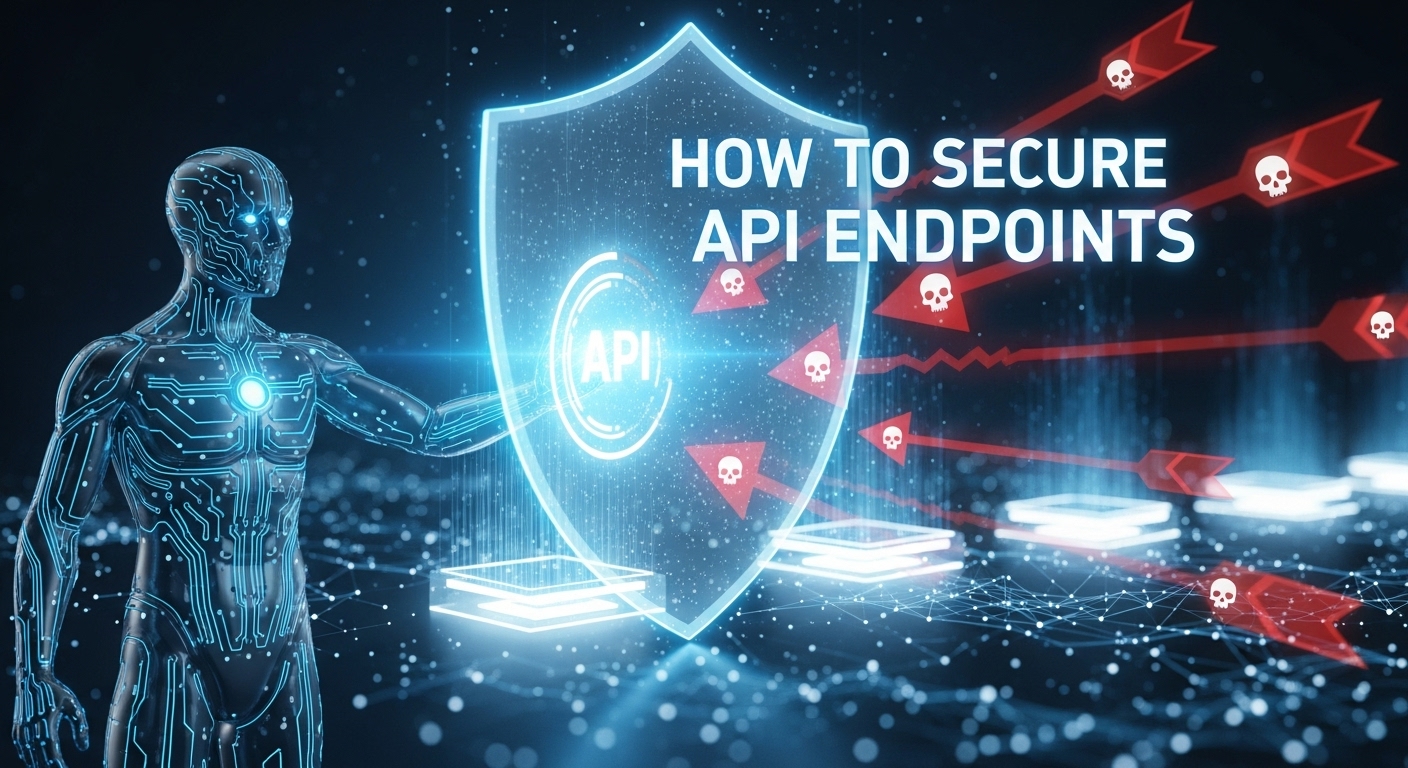API security has become a critical concern for organizations worldwide, with API-related breaches increasing by 681% over the past year according to recent industry reports. As APIs become the backbone of modern applications, learning how to secure API endpoints effectively is no longer optional—it’s essential for protecting sensitive data and maintaining user trust.
Before we dive into the technical implementation details, let’s establish what you already know about API security. Have you worked with authentication systems before? What specific security challenges are you facing with your current API implementation?
Understanding API Endpoint Security Fundamentals
When we talk about securing API endpoints, we’re addressing the protection of the specific URLs where your API receives requests. Think of API endpoints as doorways to your application’s data and functionality. Just as you wouldn’t leave your house doors unlocked, you shouldn’t leave your API endpoints unprotected.
What makes API endpoint security particularly challenging is that these endpoints are designed to be accessible over the internet, making them inherently exposed to potential threats. The key is implementing multiple layers of security that work together to create a robust defense system.
1. Implement Strong Authentication to Secure API Endpoints
Authentication serves as the first line of defense when you secure API endpoints. It answers the fundamental question: “Who is making this request?”
API Key Authentication
API keys represent the most basic form of API authentication. While simple to implement, they require careful handling:
Authorization: Bearer your-api-key-here
However, API keys alone have significant limitations. They’re essentially permanent passwords that, if compromised, provide unlimited access until manually revoked. For production environments, consider API keys as just one component of a broader security strategy.
OAuth 2.0 Implementation
OAuth 2.0 provides a more sophisticated approach to secure API endpoints. It introduces the concept of scoped access, allowing you to grant specific permissions rather than blanket access to your API.
The OAuth 2.0 flow typically involves:
- Client registration and credential generation
- Authorization code exchange
- Access token issuance with defined scopes
- Token refresh mechanisms
This approach significantly reduces the risk associated with compromised credentials since access tokens can be short-lived and scoped to specific operations.
JSON Web Tokens (JWT)
JWTs offer a stateless authentication mechanism that’s particularly valuable for distributed systems. When properly implemented, JWTs help you secure API endpoints while maintaining scalability.
A well-structured JWT includes:
- Header with algorithm information
- Payload with user claims and permissions
- Signature for verification
Remember to always validate JWT signatures and check expiration times to maintain security integrity.
2. Authorization and Access Control
While authentication identifies users, authorization determines what they can access. This distinction is crucial when you secure API endpoints effectively.
Role-Based Access Control (RBAC)
RBAC systems assign users to roles, and roles to permissions. This hierarchical approach simplifies permission management while maintaining security:
| Role | Permissions | API Endpoints Accessible |
|---|---|---|
| Admin | Full Access | All endpoints |
| User | Read/Write Own Data | /users/{id}, /profile |
| Guest | Read Public Data | /public/* |
Attribute-Based Access Control (ABAC)
For more complex scenarios, ABAC provides fine-grained control based on multiple attributes like user location, time of access, or data classification level.
3. Input Validation and Sanitization
Input validation is fundamental to secure API endpoints against injection attacks and data corruption.
Comprehensive Validation Strategy
Implement validation at multiple levels:
- Schema validation for request structure
- Data type verification
- Business logic validation
- Input sanitization to prevent injection attacks
Consider implementing a whitelist approach rather than blacklisting dangerous inputs. This ensures that only expected, safe data passes through your API endpoints.
Rate Limiting and Throttling
Rate limiting protects your API endpoints from abuse and ensures fair resource allocation among users. Implement different rate limits based on:
- User authentication status
- Subscription tier
- Endpoint sensitivity
- Historical usage patterns
A typical rate limiting implementation might look like:
- 1000 requests per hour for authenticated users
- 100 requests per hour for unauthenticated users
- Stricter limits for resource-intensive endpoints
4. HTTPS and Transport Security
Transport Layer Security (TLS) is non-negotiable when you secure API endpoints. All API communication should occur over HTTPS to prevent man-in-the-middle attacks and data interception.
TLS Configuration Best Practices
- Use TLS 1.2 or higher
- Implement certificate pinning for mobile applications
- Configure proper cipher suites
- Enable HTTP Strict Transport Security (HSTS)
API Gateway Implementation
API gateways provide centralized security management for your endpoints. They offer:
- Authentication and authorization enforcement
- Rate limiting and throttling
- Request/response transformation
- Logging and monitoring
- SSL/TLS termination
Popular API gateway solutions include Amazon API Gateway, Kong, and Zuul.
5. API Security Monitoring and Logging
You cannot secure API endpoints effectively without comprehensive monitoring and logging systems in place.
Essential Logging Elements
Log the following information for security analysis:
- Request timestamps and source IP addresses
- Authentication attempts and failures
- Access patterns and anomalies
- Error rates and types
- Performance metrics
Security Information and Event Management (SIEM)
Integrate your API logs with SIEM solutions to detect patterns indicative of attacks:
- Unusual traffic spikes
- Authentication failures from specific IPs
- Attempts to access unauthorized endpoints
- Suspicious payload patterns
Tools like Splunk, ELK Stack, and Datadog can help you implement comprehensive monitoring solutions.
6. Data Encryption and Protection
When you secure API endpoints, protecting data both in transit and at rest is crucial.
Encryption Standards
Implement industry-standard encryption:
- AES-256 for data at rest
- TLS 1.3 for data in transit
- End-to-end encryption for sensitive communications
Data Classification
Not all data requires the same level of protection. Classify your data based on sensitivity:
- Public data (minimal protection required)
- Internal data (standard encryption)
- Confidential data (enhanced encryption and access controls)
- Restricted data (maximum security measures)
7. Security Testing and Vulnerability Management
Regular security testing ensures your efforts to secure API endpoints remain effective against evolving threats.
Automated Security Testing
Implement automated security testing in your CI/CD pipeline:
- Static Application Security Testing (SAST)
- Dynamic Application Security Testing (DAST)
- Interactive Application Security Testing (IAST)
- Software Composition Analysis (SCA)
Penetration Testing
Conduct regular penetration testing specifically focused on your API endpoints. This should include:
- Authentication bypass attempts
- Authorization testing
- Input validation testing
- Business logic flaw identification
Consider using tools like OWASP ZAP or Burp Suite for comprehensive API security testing.
Advanced Security Considerations
API Versioning Security
When implementing API versioning, ensure that security measures are consistent across all versions. Deprecated API versions should have clear sunset dates and migration paths to prevent security gaps.
Microservices Security
In microservices architectures, securing API endpoints becomes more complex due to service-to-service communication. Implement:
- Service mesh security policies
- Mutual TLS (mTLS) for service communication
- Zero-trust architecture principles
Container Security
If you’re deploying APIs in containers, additional security measures include:
- Container image scanning
- Runtime security monitoring
- Secrets management
- Network segmentation
Common API Security Mistakes to Avoid
When learning how to secure API endpoints, avoid these common pitfalls:
- Relying solely on API keys without additional authentication layers
- Exposing sensitive information in URLs or error messages
- Insufficient input validation leading to injection vulnerabilities
- Overly permissive CORS policies that expose APIs to cross-origin attacks
- Lack of proper error handling that reveals system information
Implementation Roadmap
To effectively secure API endpoints, follow this implementation roadmap:
Phase 1: Foundation (Weeks 1-2)
- Implement HTTPS across all endpoints
- Set up basic authentication mechanisms
- Configure input validation
Phase 2: Access Control (Weeks 3-4)
- Implement authorization systems
- Configure rate limiting
- Set up API gateways
Phase 3: Monitoring (Weeks 5-6)
- Deploy logging and monitoring solutions
- Configure security alerts
- Implement automated threat detection
Phase 4: Advanced Security (Weeks 7-8)
- Conduct security testing
- Implement encryption for sensitive data
- Establish incident response procedures
Conclusion
Learning how to secure API endpoints is an ongoing process that requires attention to multiple security layers. From basic authentication to advanced monitoring systems, each component plays a crucial role in protecting your API infrastructure.
The strategies outlined in this guide provide a comprehensive foundation for API security. However, security is not a one-time implementation—it requires continuous monitoring, testing, and improvement to stay ahead of evolving threats.
As you implement these security measures, remember that the goal is not just to secure your API endpoints, but to build a security-conscious culture within your development team. Regular security training, code reviews, and threat modeling sessions will help ensure that security remains a priority throughout your API development lifecycle.
What aspect of API endpoint security would you like to explore further? Are there specific implementation challenges you’re facing with your current API security strategy?











